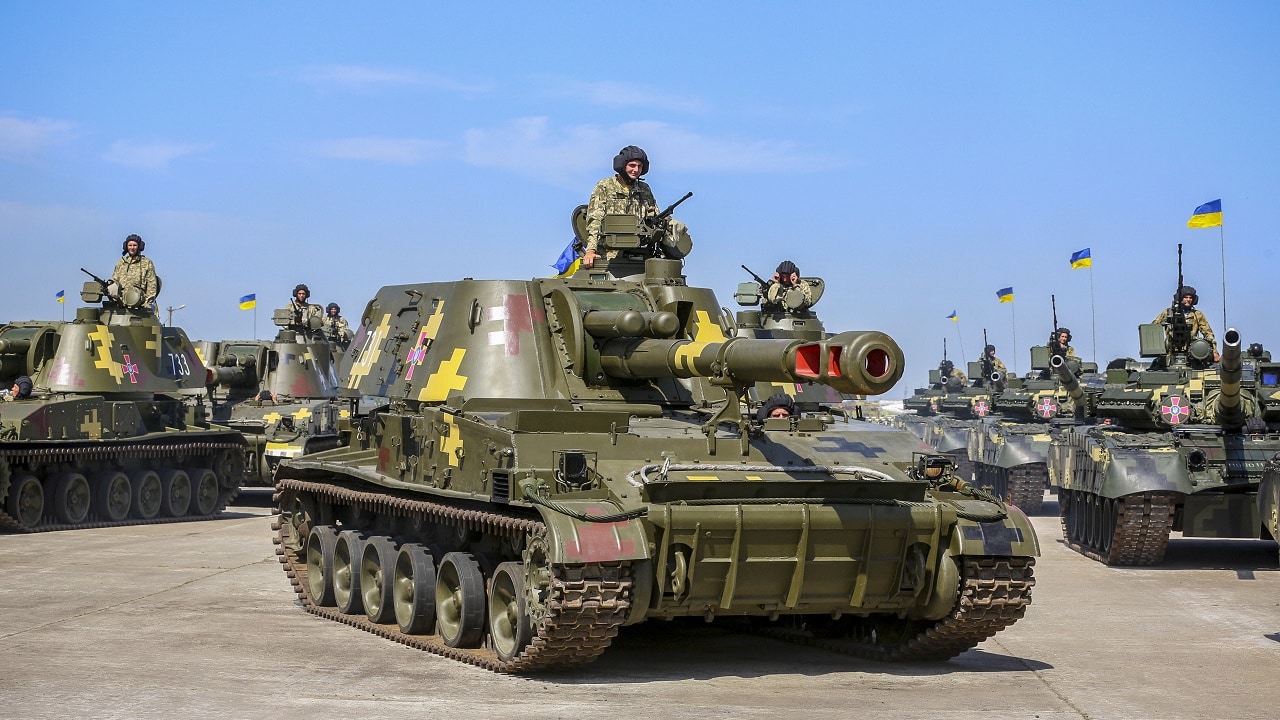Three weeks after launching its unprovoked invasion of Ukraine, Russia is beginning to look less like a mighty bear and more like a paper tiger as its continues to lose tanks and other armored vehicles.
Last week, Russian tactics were called into question when an armored convoy – the battalion tactical group (BTG) of the 6th tank regiment (Chebarkul) of the 90th tank division of the Central Command – was ambushed while advancing on the capital of Kyiv.
There have been military actions that are studied for decades, even centuries, and likely last week’s actions by the Russian tank column will be revisited for years to come – but for how armor should not approach an urban center. What is notable about this particular moment too is that it was captured on video, and subsequently shared across social media, where it highlighted the ineffectiveness of the Russian military.
“Very poor tactics displayed by this Russian armored force so close to Kyiv. They’re well within range of Ukrainian artillery in Kyiv, they’re on an obvious avenue of approach, and they still decided to bunch up like this, leaving them more vulnerable to indirect fire,” tweeted Rob Lee, doctorial candidate and senior fellow at the Foreign Policy Research Institute.
Very poor tactics displayed by this Russian armored force so close to Kyiv. They’re well within range of Ukrainian artillery in Kyiv, they’re on an obvious avenue of approach, and they still decided to bunch up like this, leaving them more vulnerable to indirect fire. pic.twitter.com/3ShhyF5OsE
— Rob Lee (@RALee85) March 10, 2022
Lee has not been alone in questioning the combat methods employed by the Russian military in its approach on the capital. Franz-Stefan Gady, an analyst at the International Institute for Strategic Studies, also called out the tactics, writing on Twitter, “Fight shows the danger of not securing urban terrain with adequate infantry plus recon. assets when main elements of a force pass through urban terrain ideally suitable for ambushes.”
Fight shows the danger of not securing urban terrain with adequate infantry plus recon. assets when main elements of a force pass through urban terrain ideally suitable for ambushes. pic.twitter.com/2guXFlGX1A
— Franz-Stefan Gady (@HoansSolo) March 10, 2022
Straight Into an Ambush, Ukraine Style
The Ukrainians are putting up a very good fight, and utilizing modern anti-tank weapons – including the U.S.-made Javelin – to great success. However, it is still Russia to blame, or more accurately its commanders on the ground, who are responsible for these mounting causalities of tanks and armored vehicles.
“I think we’re seeing a structured ambush. Anytime you put tanks in an urban area, you’ve got to be surrounded with infantry, and dismounted infantry at best,” Maj. Gen. Paul Eaton, U.S. Army (Retired) told CNN.”And clearly, we had a tank commander taken by surprise by a well-orchestrated, well-executed ambush with antitank weapons.”
In addition to losing multiple vehicles, including a T-72 main battle tank (MBT) and a BTR-82 armored personnel carrier (APC), the BTG commander, Col. Andrei Zakharov, was also killed in the actions.
Where is the Infantry in Ukraine?
As Maj. Gen. Eaton suggested, the tanks are vulnerable because of a lack of infantry support, whose job it should be to clear the streets and protect the flanks of the vehicle.
With their large main guns and thick frontal armor, tanks can be an imposing weapon – but without the room to maneuver, and without infantry support to provide the requisite protection, tanks become a large target to an enemy equipped with powerful Javelins or Ukrainian-made Stugna-P anti-tank rockets.
Russia simply lacks the personnel to provide that protection. Yet, this isn’t exactly news, and U.S. Army Capt. Nicolas Fiore, warned as much in a 2017 paper for Armor, writing, “BTGs were typically effective in combat operations in Ukraine from 2013-2015, but on several occasions, BTGs were tactically defeated by Ukrainian regular-army units despite Russian overmatch in firepower, electronic warfare (EW) and air-defense artillery (ADA).”
History is now repeating itself and the situation likely won’t be improved, as Capt. Fiore added, “Shortages in ready maneuver forces, especially infantry, significantly limit Russian maneuver capabilities. BTGs cannot simultaneously mass for offensive operations and maintain flank and rear security, and they struggle to concentrate artillery against attacks on multiple simultaneous axes.”
Russia is now taking desperate measures to remedy the situation. That has included installing strange metal cages, which have been described as looking like “barbecue grills” on the top of the tanks to provide protection from the Javelins; while Moscow has recruited volunteers from Syria, who are experienced in urban warfare, to aid in its invasion. The question will be how well those urban fighters can actually integrate with Russian BTG tactics.
For now, Ukraine is increasingly becoming the graveyard of Russian tanks.
Now a Senior Editor for 1945, Peter Suciu is a Michigan-based writer who has contributed to more than four dozen magazines, newspapers and websites. He regularly writes about military hardware, and is the author of several books on military headgear including A Gallery of Military Headdress, which is available on Amazon.com. Peter is also a Contributing Writer for Forbes.

